BenQ XL2720T Gaming Monitor Reviewed
by Chris Heinonen on June 17, 2013 4:35 PM ESTWith TN panels you are of course subject to the problem of poor viewing angles in comparison to other monitor technologies. The problem also accentuates itself on larger displays like the XL2720T, where the viewing angle is larger for your vision, and so the edges start to have color shifts even when you are directly centered on the screen. Even with regular content on the screen, I can notice shifts in contrast and color at the edges of the screen in general use, which I find distracting. I didn’t notice it vertically as much, but the angle isn’t nearly as large as with the horizontal position.
I also found the overall look of the XL2720T to be a bit worse than with other displays I have had in recently. Perhaps it’s the anti-glare coating, but everything looks slightly fuzzy, even the simple black text in this document that I’m typing right now. With the lower resolution I’d expect to see more sharp angles and pixels, but everything looks a bit too smoothed out because of this issue. I have to say that for general use, I can’t imagine living without an IPS monitor at this point.
The BenQ has a lot of preset modes available for calibration, but the best data was obtained with the sRGB mode. Standard was a bit better for grayscale, but color accuracy was better in sRGB making it the overall best choice. Surprisingly, Photo mode was far and away the worst preset on the BenQ when it comes to accuracy, even more than the FPS modes are. Perhaps they meant to call it “Galaxy S3 Photo Mode”, but I’d usually expect a mode for viewing photos to be accurate. So just don’t use it, unless you want a really vivid Instagram filter applied to all your photos on your PC.
The uncalibrated grayscale performance for the BenQ is decent though not outstanding. The average dE2000 is just below 3.0, which is the visible threshold. As you look at the RGB balance you can see there is a distinct blue-green tint to the grayscale, which you can easily see on screen as well. The gamma comes out just above 2.0, well off our 2.2 target, and it isn’t linear at all which will lead to images that are a little dark in the shadows and too washed out in the highlights. The contrast ratio of 706:1 is on the low side, but the gamma issue really leads to a bit of a washed out image.
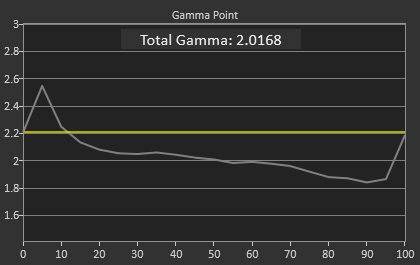
The color points are much better, with a dE2000 of 2.1 and most luminances are pretty close to correct, with all the colors having a dE2000 below 3. The worst issue is the 100% saturation, 100% luminance white that throws the average off a bit, and that will be noticeable as that’s your background white in most applications. Overall you get good numbers for a preset mode.
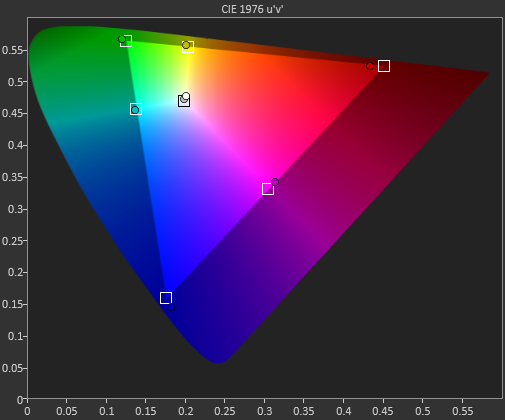
The colorchecker tests look good overall with the exception of two orange shades that are well off their target. Every other color has a color error that is practically invisible, as long as it isn’t right next to a correct sample. The biggest issue is that the luminance levels are too high across the board, and luminance is the most noticeable error in color.
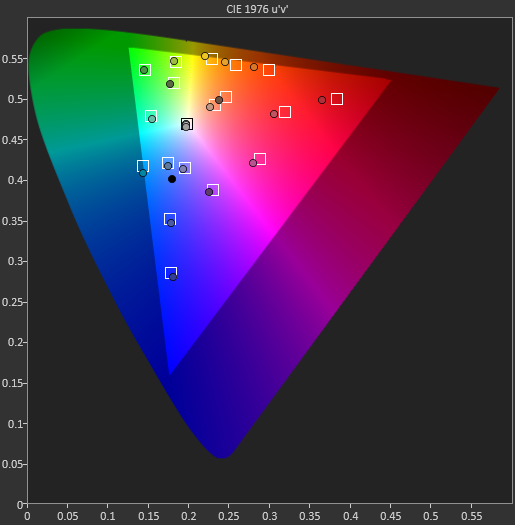
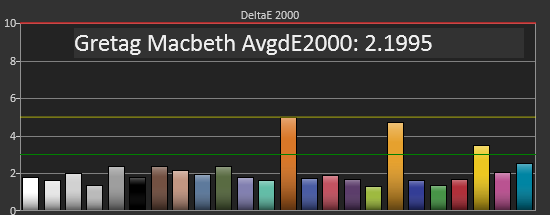

Our saturations data is also very good, showing very uniform errors across the spectrum, and no really large spikes to be heavily concerned with. Overall for a pre-calibrated mode, the sRGB does a good job on the BenQ XL2720T.
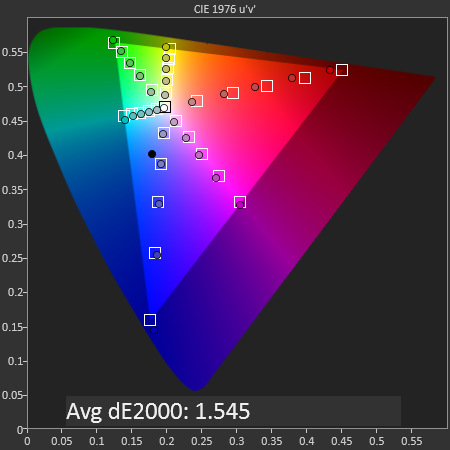
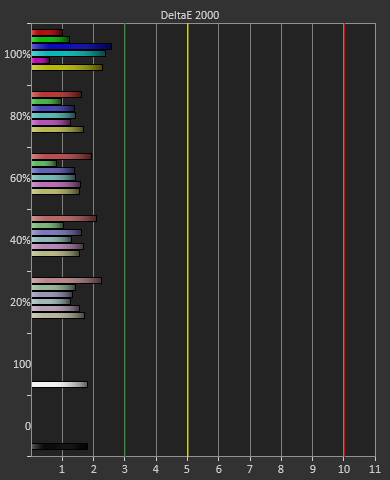
Looking at the gamut, we see just below 71% of the AdobeRGB gamut, which is what sRGB should measure out at.
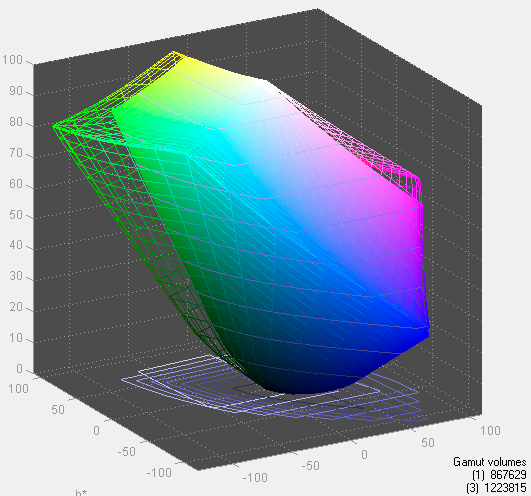
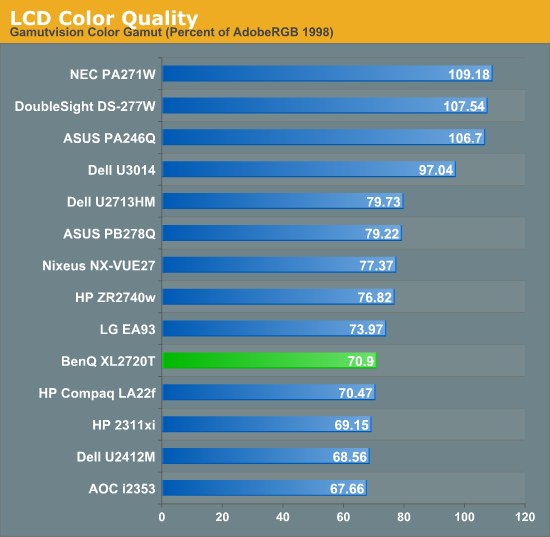









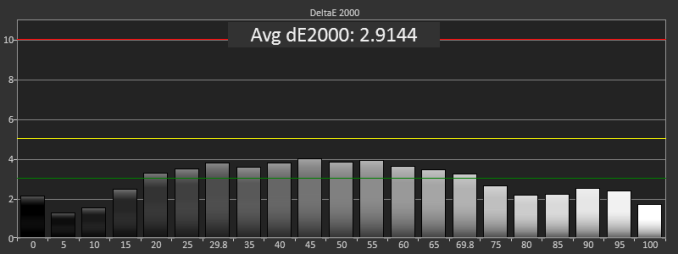










79 Comments
View All Comments
althaz - Monday, June 17, 2013 - link
What an absurd thing to say - the vast majority of people have 1080p monitors and it's not just because they represent good value for money.As a gamer and a worker I have a trio of 1080p monitors for several reasons:
@ 1080p I'll be able to run games at maxed settings for a while (and I haven't upgraded for over a year).
Dual monitor > than one big monitor (by a very long way). Triple monitor is of varying degrees of usefulness to most people, but I find two landscape and one portrait monitor is basically perfect for all tasks (some people find three monitors overwhelming however).
mutantmagnet - Tuesday, June 18, 2013 - link
We can downsample a lot of games these days. Until strobe backlighting is possible on the IPS panels settling for TN is fine since they are already cheaper and achieving 100+ FPS consistently isn't easy above 1080.tackle70 - Monday, June 17, 2013 - link
Yeah I could never go back to TN panels after making the jump to IPS, and I play tons of games. I am guessing that 99.9% of gamers are not good enough for the 120 Hz to make any real difference other than as a placebo effect, and so I don't see the point.I wish we could get some new technologies out there other than this TN garbage :\
TesseractOrion - Monday, June 17, 2013 - link
I have a Yamasaki Catleap (IPS) and a Qnix Q2710 (PLS) , the latter at 120Hz, the former @ 60Hz (only due to DVI restriction on the 7950 GPU, had it up to 116Hz on the DL-DVI port). Hard to go back to TN and 1920x1080 now... very stripped down monitors, no scaler, OSD or multiple inputs, resulting in low input lag as compensation...Jedi2155 - Monday, June 17, 2013 - link
Thanks Chris for your review. I believe it would be a better format in future reviews to add a table of specifications describing the important aspects of the product during the introduction. It took me multiple pages of skimming in order to find the information that this was in fact a standard TN panel at 1920x1080 resolution (I was hoping for a 27" IPS 120 Hz, or at least 2560x1440).While this information could be found with some googling, I've always come to expect AnandTech to provide very poignant and useful information very quickly and easily. Good review and I hope you will continue to refine your skills in the future!
chizow - Tuesday, June 18, 2013 - link
Questionable results and questionable competency with this review. Main concerns below:1) Was this monitor tested with LightBoost always enabled? Main benefit of these 3D Vision Ready panels is their ability to always be in LightBoost mode if you trick the Nvidia driver to set the 3D Vision mode to "Always On".
2) Input lag results are questionable given this is a 120Hz input panel and the results indicate 3 frames worth of input lag. Highly doubtful on a 120Hz TN. Did you set the panel to gaming mode to see if there is a difference?
3) I'd like to see comparisons against the Asus VG278H or even VG278HE, which have become the standard for 120Hz TN LightBoost panels.
mdrejhon - Tuesday, June 18, 2013 - link
The input lag is because the Leo Bodnar input lag tester is limited to 60Hz and HDMI. So it's not an accurate measurement of input lag.chizow - Tuesday, June 18, 2013 - link
Wow, nice catch. I didn't even bother reading the testing methodology, but if true that's a pretty epic fail on reviewer's part. Not only is it probably going through the built-in video scaler/processor at that point and introducing additional latency, but it also effectively cuts refresh rate in half while doubling response times.Really needs to be re-done over DVI and at 120Hz with and without LightBoost.
Samus - Tuesday, June 18, 2013 - link
My last (and only) two BenQ monitors broke. I should have learned for first time after the second one caught fire.jigglywiggly - Tuesday, June 18, 2013 - link
Why did you pick the worst 120hz display? Pick the vg278 or vg248qeboth are 144hz and much better